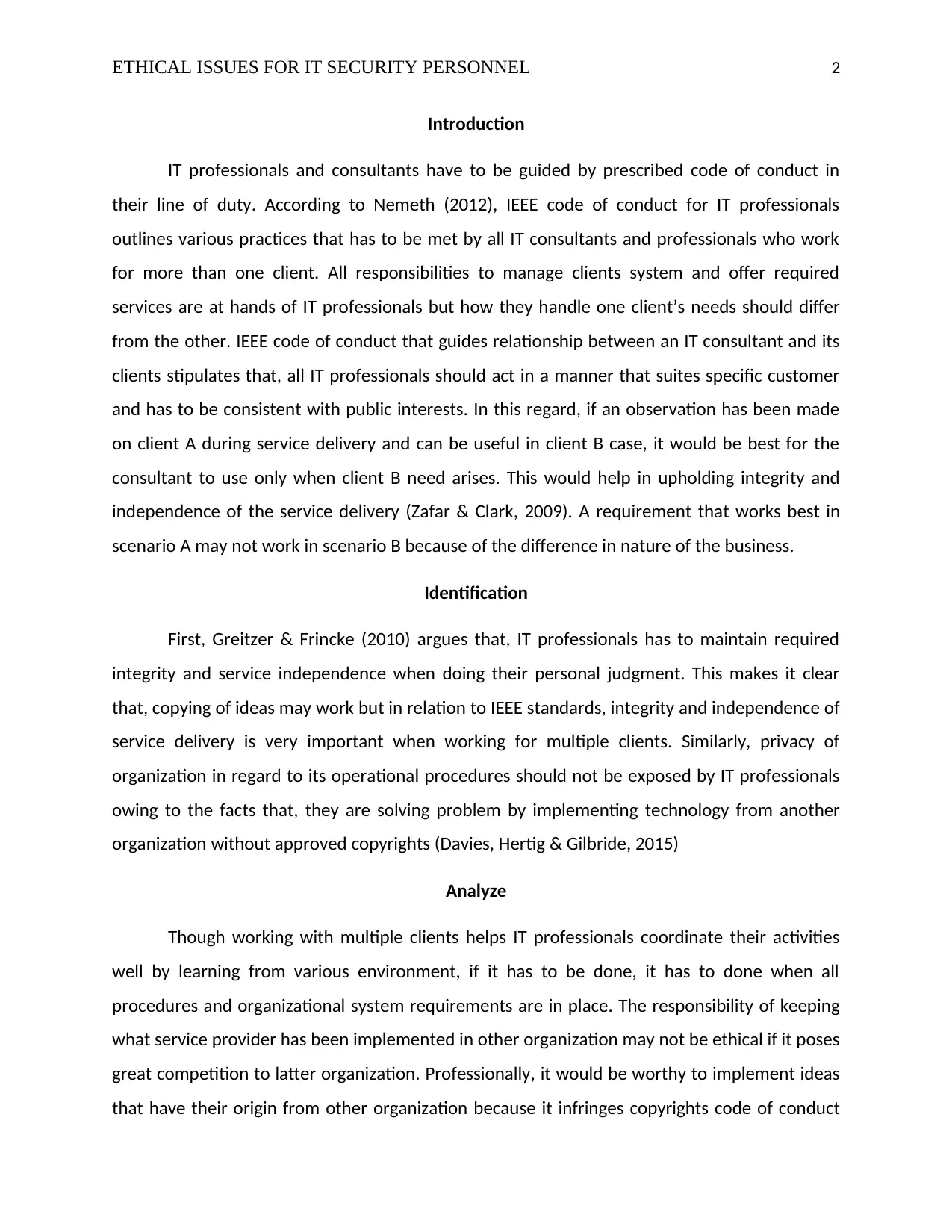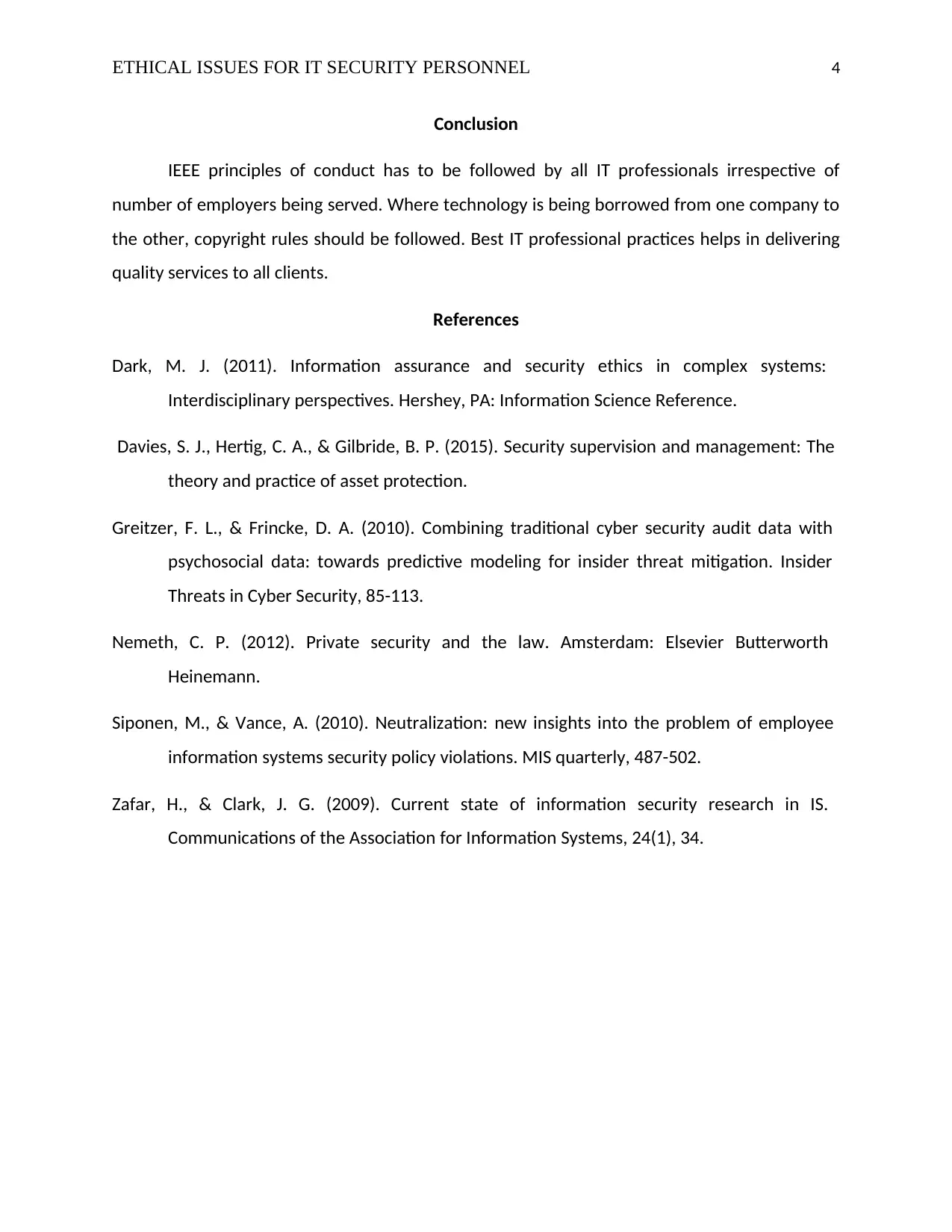Ethical Considerations for IT Security Personnel: An Analysis
VerifiedAdded on 2020/03/01
|4
|1087
|33
Essay
AI Summary
This essay delves into the ethical considerations that IT security personnel must navigate, emphasizing the importance of adhering to professional codes of conduct, such as the IEEE guidelines. It explores the complexities of managing multiple clients, highlighting the need to maintain integrity and service independence to avoid conflicts of interest and protect data privacy. The essay examines the ethical implications of sharing information or implementing solutions across different organizations, particularly concerning intellectual property rights and competitive advantages. It stresses the importance of understanding copyright laws and the potential consequences of inadvertently disclosing sensitive operational procedures. The analysis underscores the need for IT professionals to balance their responsibilities to multiple employers while upholding ethical standards and ensuring the confidentiality and security of client information. The essay concludes by reinforcing the significance of ethical conduct in delivering quality services and protecting the interests of all stakeholders involved.
1 out of 4











![[object Object]](/_next/static/media/star-bottom.7253800d.svg)